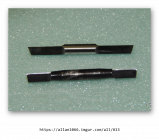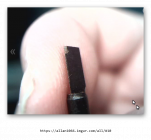You have two different problems here.. Your scale is not repeating reliably. It really doesn't matter what the numbers say for a starting point. When you place your 50gn check weight in the pan it might register, say, 50.5 grains, not a problem at all, it can easily be corrected. What is a problem is if it doesn't ready 50.5gn every time - remove and replace the pan a dozen times, should always ready 50.5gns. If it doesn't then no amount of tinkering with the weights or re-zeroing will make a difference.
Only when it's repeatable will you be able to progress from there.
If it's not repeatable I would first check the knife edges again with a good eye glass looking for any burrs or dull areas. Remove and scrub the agate bearings with a toothbrush and alcohol/lighter fluid and try again. If no improvement, remove the bearing side plates and try again, this will eliminate any problems being caused by the knife edges contacting the side plates.
If still no difference, check the panhanger stirrup. The panhanger swings in it's own little set of knife edges, again give them a scrub and ensure the stirrup is free to swing in the center of the slot
Next thing to check would be the damper system, check that the damper blade is not loose on the beam and shine a flashlight in the damper slot to look for fine hairs of wire wool/ dust sticking to the magnets.
Only when it repeats every time can you progress to any sort of calibration.
(The increasing error the higher up the range you go is due to the main poise being too heavy, possibly due to an accumulation of dust or grime if the scale has not been kept covered.)












